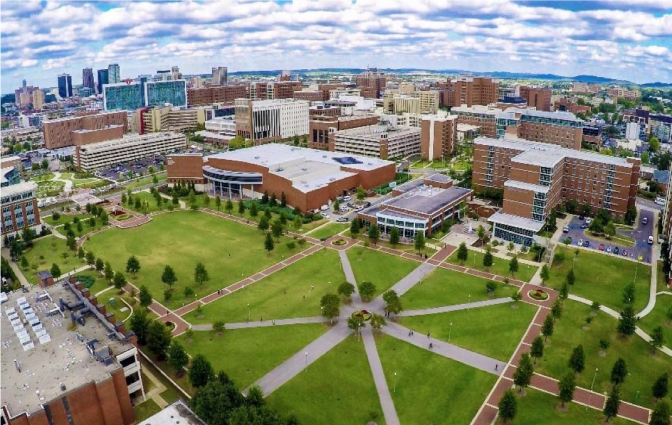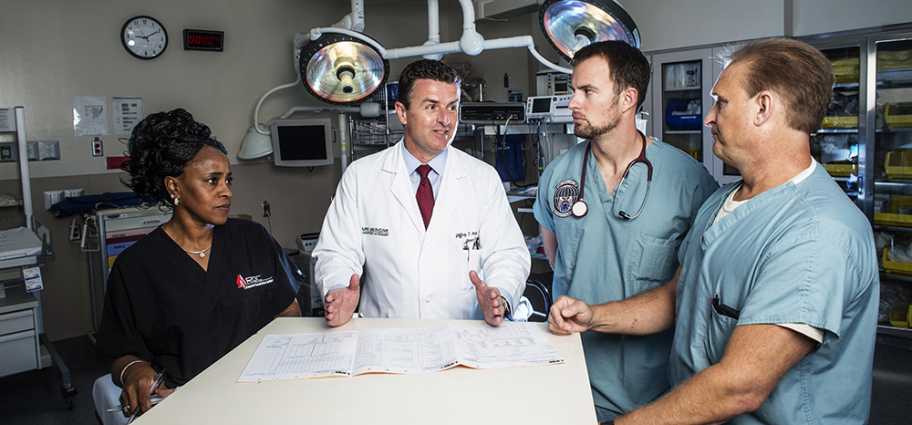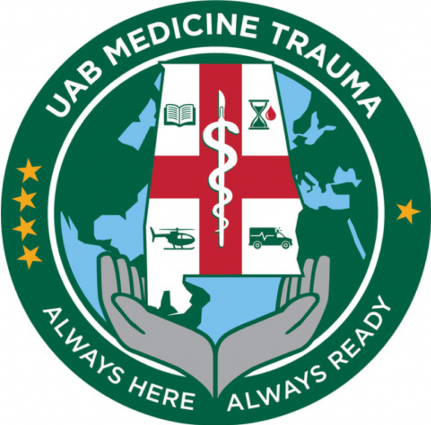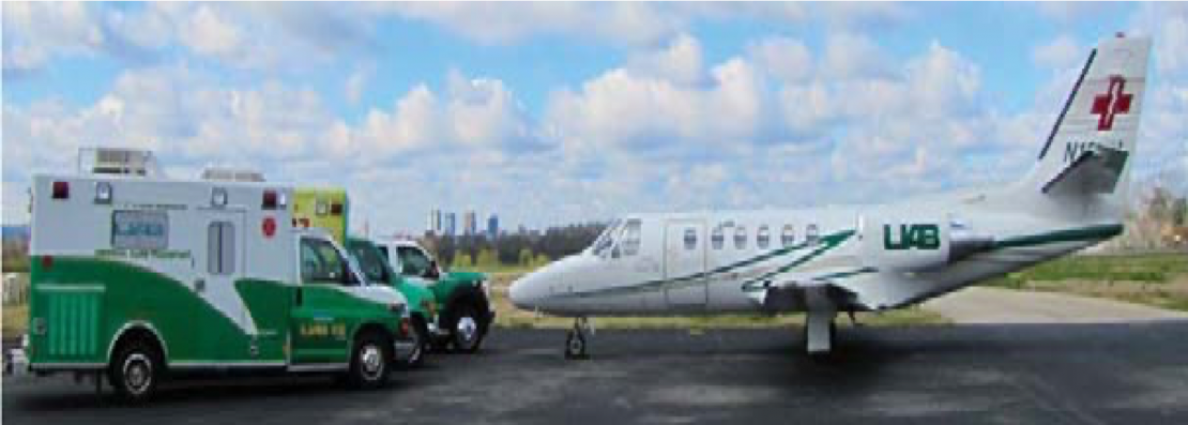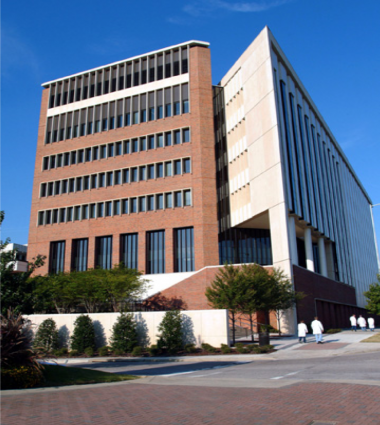Facilities and Resources
-
The University of Alabama at Birmingham
The University of Alabama at Birmingham
Over the past four decades, UAB has evolved from an academic extension center into an autonomous, comprehensive urban university and academic health center within the University of Alabama System. UAB has established wide-ranging programs in six liberal arts and professional schools and six health-professional schools, with graduate programs serving all major units.
The University has seen record overall enrollment for many consecutive years, with more than 19,000 students enrolled. The UAB Graduate School now offers doctoral programs in 37 areas, post-master’s education specialist programs in eight areas and master’s-level programs in 50 areas, spanning across the disciplines. UAB maintains extensive collaborative efforts with HudsonAlpha® Institute for Biotechnology, Southern Research, Auburn University, the entire University of Alabama System and other universities and organizations worldwide.
UAB and the city of Birmingham are linked in a dynamic partnership of growth and development. Birmingham offers UAB faculty, staff and employees a wide range of excellent cultural, social, recreational and sports activities. This year, the Times Higher Education World University Rankings recognized UAB as the top young university in the United States and ranked UAB No.10 worldwide. The state’s largest single employer – with more than 23,000 employees – UAB supports one of every 33 jobs statewide and has an annual economic impact of $7 billion on Alabama.
In addition to its impact in the Birmingham metro area, UAB provides Birmingham and the surrounding areas with the state’s most comprehensive health care facilities and most outstanding research centers, along with the best educational opportunities. Greater than 150 Degree-and-Certificate-Granting Programs are offered through the 11 schools and colleges in the health sciences and academic areas. The UAB Health Center includes the Schools of Medicine, Dentistry, Nursing, Optometry, Public Health, Health Professions, the Graduate School and the Lister Hill Library of the Health Sciences. UAB ranks among the top 20 institutions receiving federal research funds. With more than $562 million dollars in funding, UAB is home to more than 100 research centers.
-
UAB School of Medicine
UAB School of Medicine
The UAB School of Medicine is dedicated to excellence in the education of physicians and scientists in all of the disciplines of medicine and biomedical investigation for careers in practice, teaching and research.
Central to this educational mission are the provision of outstanding medical care and services and the enhancement of new knowledge through clinical and basic biomedical research. The UAB School of Medicine is made up of nearly 800 students, 1,400 full-time faculty and 26 academic departments. Volker Hall Education and Research Tower serves as the administrative home and primary teaching facility for the School of Medicine with classrooms, labs and other medical education resources.
-
UAB Health System
UAB Health System
Health care facilities at UAB serve as training centers for more than 6,500 students, residents and fellows annually, including nearly 1,700 in the School of Medicine. The Health System facilities include UAB Hospital, The Kirklin Clinic, Kirklin Clinic at Acton Road, UAB Highlands, Callahan Eye Foundation Hospital, Spain Rehabilitation Center, affiliates UAB Medical West and Baptist Health (Montgomery), and the Hazelrig-Salter Radiation Center and UAB Women & Infants Center.
UAB Hospital is the centerpiece of the UAB Health System, having been recertified for the third time as a Magnet Hospital for Nursing Excellence and having been recognized in every issue of U.S. News & World Report’s “America’s Best Hospitals for 25 years in a row. The 1,134-licensed-bed public hospital is the third-largest and among the best equipped in the nation. UAB University Hospital is the largest hospital in Alabama. It provides a complete range of primary and specialty care services and the most up-to-date treatments, while being a major center for clinical research.
UAB Hospital is the only Level I Trauma Center in Alabama and has been certified by the American College of Surgeons since 1999.
-
UAB Department of Surgery
UAB Department of Surgery
The UAB Department of Surgery participates in innovative research to expand the frontiers of biomedical knowledge and clinical practice. There are 104 primary faculty members in the UAB Department of Surgery, which has earned a national and international reputation for its unique blend of advanced surgery, excellent patient care and research. The department’s faculty are also committed to investigating new treatments and technologies and researching the surgical treatment of various disorders and diseases. Extramural research funding crosses all eight divisions of the department and totals more than $14 million annually with $3.5 million in NIH funding. With recent faculty recruitment efforts, it is expected this will continue to grow significantly in the near future. The Department of Surgery at UAB is able to leverage its diversity and institutional strength to provide expansive translational research potential to its trainees.
Administrative support, including statistical and computer support, is available through the Department of Surgery. The department employs full-time, faculty-level biostatisticians and three full-time computer technicians. An accounting office provides post-award grant administration and is staffed by four accounting assistants. A pre-award grant administration office with three full-time employees provides assistance in preparing and submitting grant applications, fulfilling University requirements for assurances and certifications and serving as a liaison to staff in the UAB Office of Sponsored Programs.
-
UAB Division of Trauma and Acute Care Surgery
UAB Division of Trauma and Acute Care Surgery
The UAB Department of Surgery’s Division of Trauma and Acute Care Surgery comprises 19 faculty members and includes surgical specialists in trauma, burn and surgical critical care. Together with the regional and statewide EMS program, the Division of Acute Care Surgery provides a comprehensive multidisciplinary program of care for the severely injured multi-system trauma or burn victims across Alabama. To that end, the division works closely with the Division of Plastic Surgery and the departments of Emergency Medicine, Neurosurgery, Orthopaedic Surgery, Otolaryngology, Oral and Maxillofacial Surgery and Urology at UAB.
The UAB Division of Trauma and Acute Care Surgery also works closely with the UAB Center for Injury Sciences. Founded in 1999, the CIS conducts research to improve trauma care. The mission of the CIS is to promote injury prevention and improve outcomes from injury at all stages of care, from the prehospital setting to resuscitation, acute care and rehabilitation. Clinicians from many specialties, including trauma surgeons, emergency medicine physicians, anesthesiologists, intensivists, and rehabilitation specialists, work closely with epidemiologists, basic scientists, biostatisticians, health economists, health psychologists and methodologists in the CIS. The center is comprised of four research units: the Clinical Trials Unit, the Trauma Care Delivery Unit, the Basic Science Unit and the Evidence Synthesis Unit.
The UAB Division of Trauma and Acute Care Surgery also partners with U.S. Air Force and the U.S. Army to enhance or maintain the skills and abilities of medical special operations soldiers:
- U.S. Air Force Special Operations Surgical Team: Three Air Force teams have permanent duty locations assigned to UAB. Each team consists of a trauma surgeon, emergency medicine physician, orthopaedic surgeon, surgical technician, respiratory technician and CRNA. The objective of this partnership is to keep the SOST’s emergency surgical skills at an optimum level.
- U.S. Air Force Pararescue Jumpers: Air Force PJs from Special Tactics Squadrons and Rescue Squadrons come to UAB for surgical skills continuing their education. This rotation lasts for two-week intervals, accommodates four PJs per rotation and is ongoing throughout the year. The training affiliation agreement has been uninterrupted since 2007. PJs also participate in direct patient care in UAB’s Level 1 Trauma Center to maintain and develop their medical skills.
- U.S. Army Special Operations Command 18-Deltas: UAB has an ongoing training affiliation agreement with USASOC where four 18-Deltas per rotation participate in UAB’s Medical Proficiency Training program. During these on-month rotations, 18-Delta soldiers maintain and develop their relative expertise by providing hands-on patient care in a clinical setting under the supervision of licensed providers.
-
UAB Department of Emergency Medicine
UAB Department of Emergency Medicine
The Department of Emergency Medicine comprises a team of board-certified emergency physicians dedicated to the continuous provision of acute patient care in UAB Hospital’s Emergency Department including all clinical, instructional, educational and quality assurance activities. The department operates two clinical emergency departments at UAB Hospital (85,000 annually visits) and at UAB Highlands Hospital (20,000 annual visits), with more than 30 residents and 25 full-time faculty.
The Department of Emergency Medicine ranks in the top 10 in extramural research funding among U.S. academic emergency departments. Examples of ongoing major research efforts include a population-based cohort study of sepsis incidence and risk factors in the 30,000-subject REGARDS (REasons for Geographic and Racial Differences in Stroke) cohort, the screening of Emergency Department patients for HIV and the Hepatitis C Virus, the derivation of novel staging systems for acute kidney injury and risk stratification of older acute heart failure patients.
-
UAB Center for Clinical and Translational Science
UAB Center for Clinical and Translational Science
The CCTS was officially established by the University of Alabama Board of Trustees in 2006 and was initially funded by a five-year, $26.9 million NCRR CTSA in 2008. The CCTS is one of 62 institutions in the CTSA national consortium and is directed by Robert Kimberly, M.D.
The CCTS also provides pre-review panels, especially for NIH grants. This service will be utilized for the pre-review of the anticipated UG3/UH3 that will result from this planning grant.
The vision of the CCTS is to transform the institutional environment by building productive and efficient interdisciplinary research teams through educational ingenuity, regulatory reorganization, resource coordination and methodological innovation. Its mission is to develop a transformative infrastructure that spans the spectrum, from preclinical research to bench-to-bedside translation to community implementation.
-
James and John Kirklin Institute for Research in Surgical Outcomes at UAB
James and John Kirklin Institute for Research in Surgical Outcomes at UAB
Established in 2016, the KIRSO and its staff have decades of experience in constructing, organizing and conducting outcomes research studies in cardiovascular research and have expanded into a multidisciplinary institute focused on surgical outcomes research with extensive expertise in quantitative analysis. Their services include project management, data collection, database design, statistics, reporting results, regulatory affairs, informatics, research consultation and education and training, with an emphasis on improving outcomes of surgical therapies and their impact on patients, on the health care system and on society at the local, national and global levels.
Trainees in surgical health services research have access to significant expertise in quantitative research, including methods planning and statistical analysis. KIRSO offers many training opportunities and is currently developing a statistical lecture series that will be available for postdoctoral fellows.
-
Human Protections at UAB
Human Protections at UAB
UAB sponsors an institutional review board to approve, monitor and review biomedical and behavioral research involving humans, and to safeguard the rights, safety and wellbeing of all research subjects. The board is fully accredited by the AAHRPP. To facilitate expediency, UAB maintains two review boards each meeting fortnightly, such that there is one IRB review meeting each week (IRB #1, IRB00000196; IRB #2 IRB00000726; IORG Registration expires 02/23/2020).
-
UAB Libraries
UAB Libraries
The Lister Hill Library of the Health Sciences at UAB is the largest biomedical library in Alabama and serves as a resource library for the Southeast/Atlantic Region in the National Network of Libraries of Medicine. Professional research librarians staff the facility.
LHL provides a variety of resources that support the teaching, research and patient care goals of the institutions. Faculty, staff and students can search a range of databases and take advantage of the library's information services and classes. LHL provides access to remote and local online databases, including the LHL Online Catalog that lists books, journal titles, software and audiovisual programs.
-
UAB Information Technology
UAB Information Technology
The Information Technology group at UAB is responsible for the campus computing network, IT resources and IT security. They are committed to providing innovative technology that supports the academic environment, including research at UAB.
In addition to maintaining an expansive computing network, they provide campus-wide resources/subscriptions that broadly benefit the research community, including Citrix Zoom for online video conferencing and desktop sharing, Citrix GoToTraining for online interactive instruction with employees and collaborators, UAB Box for facile file sharing and the Integrated Research Administration Portal, which provides pre-award, post-award and compliance modules for investigators.
